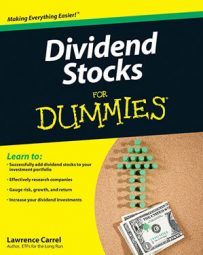Value investors hunt for bargains, but they buy only after performing some careful research and crunching the numbers. When you spot a stock that seems to be underpriced, ask the following questions to determine whether it’s a real buy:
-
Is this stock down due to market conditions? If the broader stock market is down, possibly due to an economic slowdown or recession, chances are good that most other stocks are down too. If the share price falls but the company’s fundamentals remain strong, this stock may be the bargain you’ve been looking for. (If the market is up but the stock is down, the stock isn’t necessarily a loser. The drop in share price may be an anomaly representing a good buying opportunity. Ask more questions.)
When market conditions turn sour, a rational reason for indiscriminate selling is when investors experience a liquidity crisis. Desperate for cash but unable to sell their worst money-losing investments, investors in this situation sell what they can, typically their most liquid stocks and bonds. Often these may be their best investments, but the need for cash forces them to sell. This scenario provides a bargain for the value investor.
-
Is this stock down because of sector news? If bad news comes out of one stock in the sector, traders may flee from stocks in the same sector. If a good company’s stock takes a hit because of another company’s misfortune, that’s a bargain waiting to happen.
-
Is the stock down because it’s not in a sexy industry? At the peak of the tech bubble, anything that wasn’t a technology stock (pretty much anything that functioned as a part of the economy prior to 1980) was considered out of fashion, and their stock prices fell as a result. However, they continued to post earnings and revenue growth. The industrials, manufacturers, food processors, and other standard bearers became value stocks in the late 1990s. Value investors were rewarded for their patience and conviction when the tech bubble burst and investors returned to more traditional companies.
-
Is this stock down because of problems specific to this company? If investors have fled for good reason, sell shares in the company if you own them or avoid buying if you don’t. However, keep in mind that the market tends to overreact and that some negative news can be very short-lived, especially if it’s not true. A passing bit of bad news can trigger a good buying opportunity, but if the news points out fundamental problems in the company’s success or operations, watch out. Be wary of the following:
-
Declining sales or earnings
-
Excessive debt
-
Little or no cash flow
-
Scandal
-
Illegality, such as falsifying documents or insider trading
-

